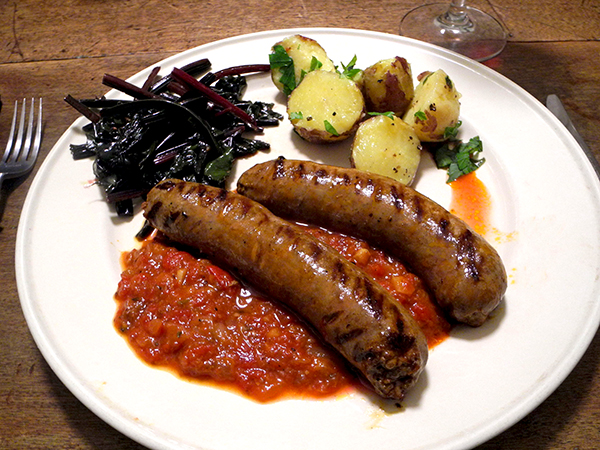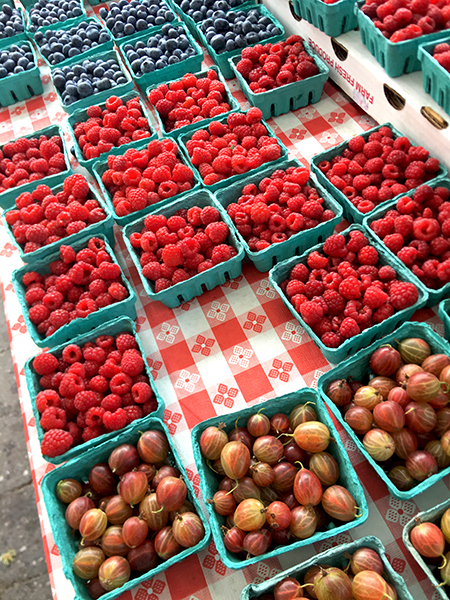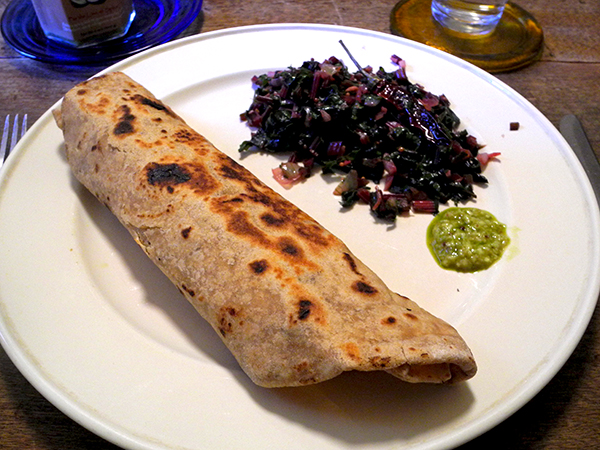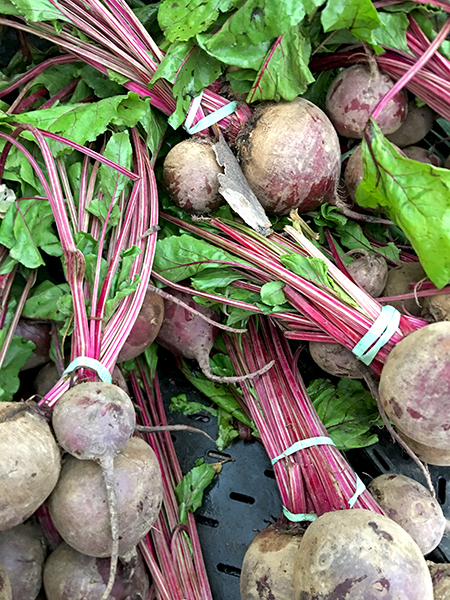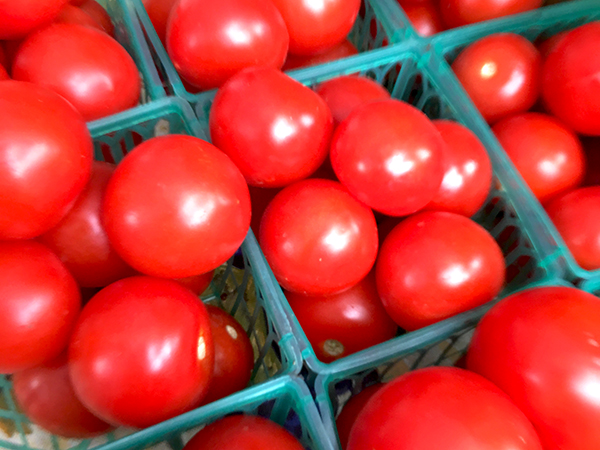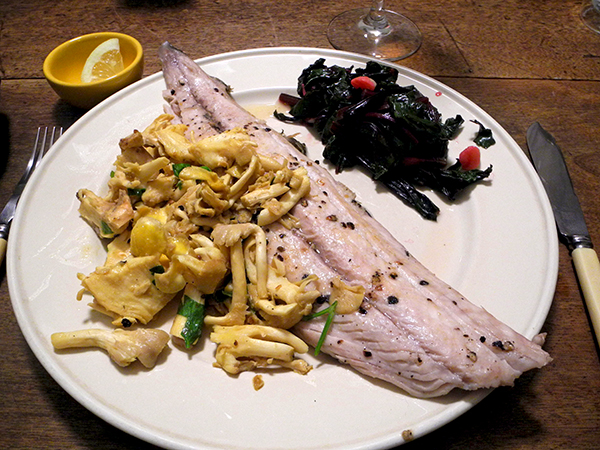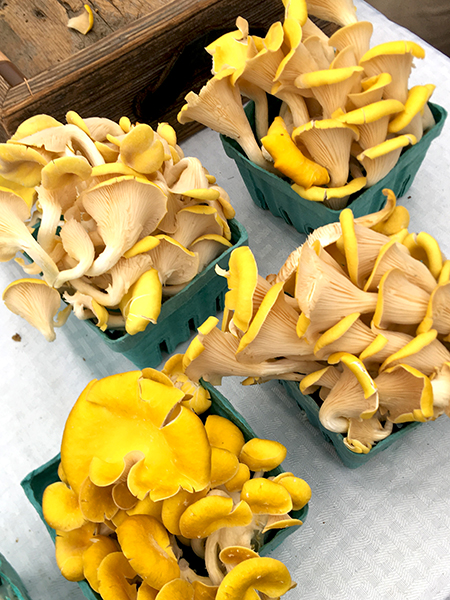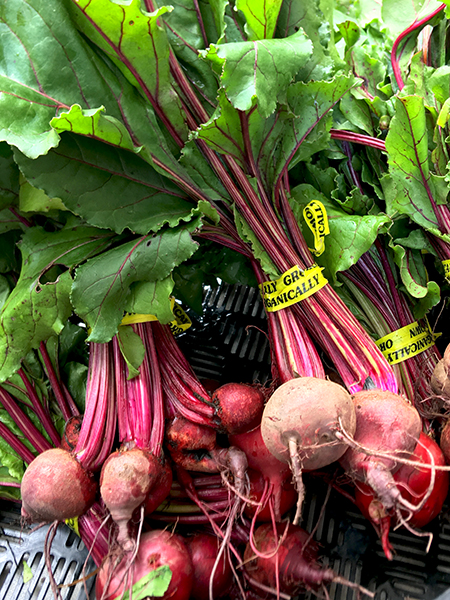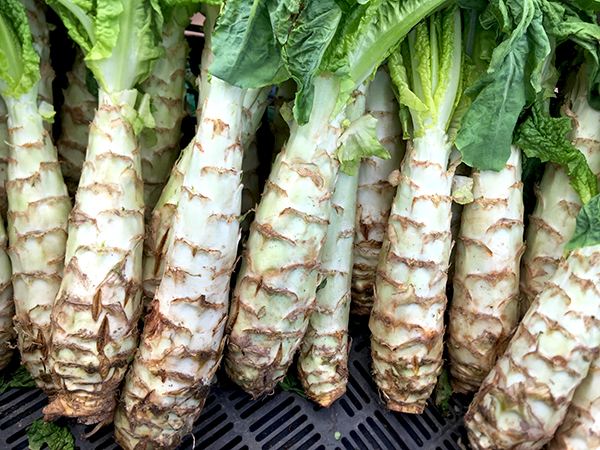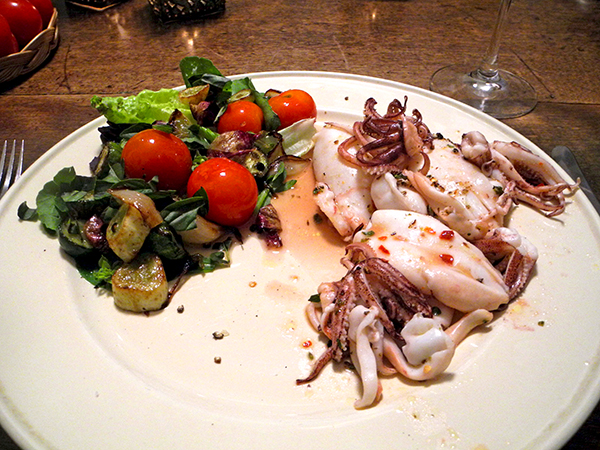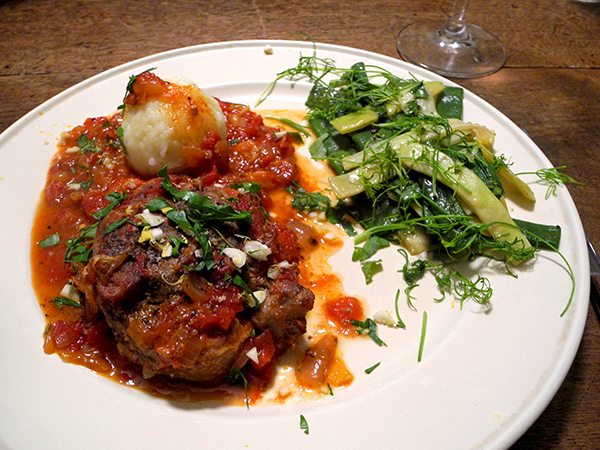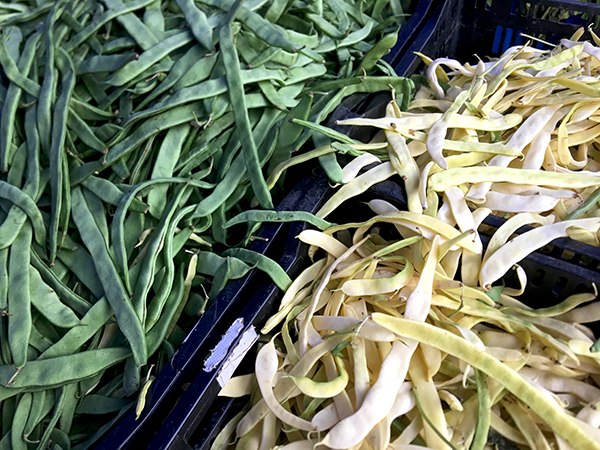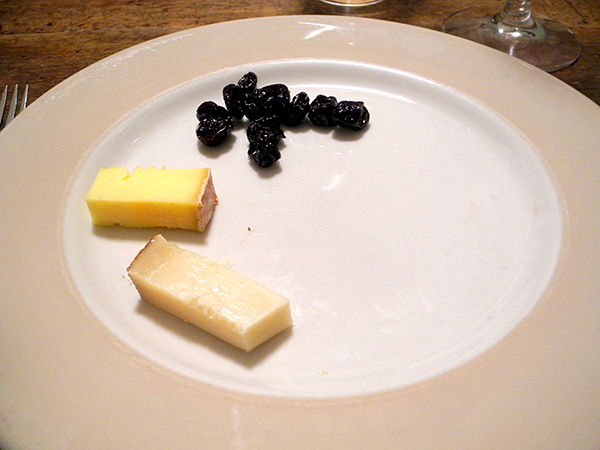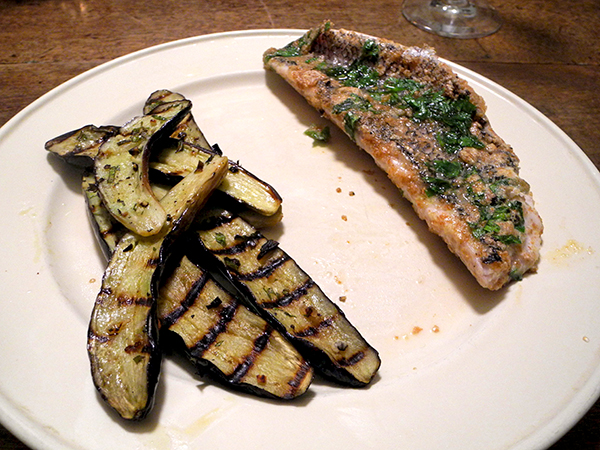
Hake is a great fish, and this is a terrific way to appreciate it so its flavors can shine, especially when it’s as fresh as this fillet was last night.
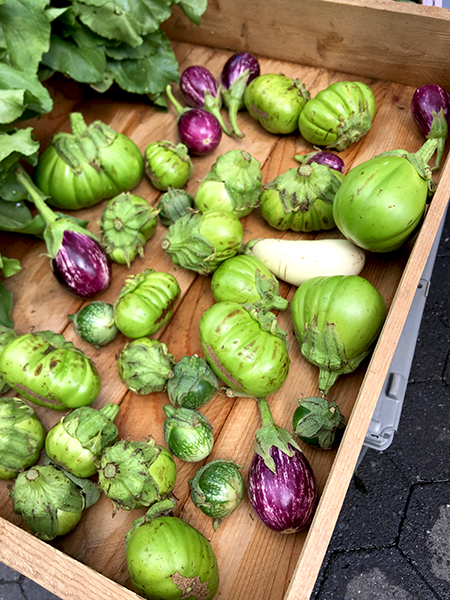
The eggplant had been too beautiful to pass up at the Union Square Greenmarket on Friday. Like most of my vegetable purchases, they were free agents [did I just use a sports metaphor?] until one hour before I began to prepare this meal, when I decided they would be an excellent accompaniment of the hake.
- one thick 15-ounce hake fillet from P.E. & D.D. Seafood Company, halved, dredged in seasoned flour and dipped in a beaten egg from Millport Dairy, sautéed in olive oil along with a handful of sage leaves from Keith’s Farm inside a heavy tin-lined oval copper pan for about 8 minutes, turning the sections half way, then sprinkled with organic lemon juice from Whole Foods Market and the small amount of pan juices that remained, arranged on 2 plates, garnished with chopped herbs (lovage from Keith’s Farm and parsley from Norwich Meadows Farm), served with lemon wedges on the side
- five different kinds and colors of baby eggplant, each cut into half-inch slices, mixed with a little olive oil , 6 or 8 Kalamata olives olives from Whole Foods Market, pitted and halved, finely-chopped garlic from Norwich Meadows Farm, sea salt, and freshly-ground Tellicherry pepper, pan-grilled over a brisk flame, turning once, and, just before the heat was turned off, joined by 8 or so small multicolored cherry tomatoes from Alex’s Tomato Farm stall in Chelsea’s Down to Earth Farmers Market, sprinkled with torn basil leaves from Stokes Farm, arranged on the plate and drizzled with a bit of olive oil
- a small Orwashers ‘Chardonnay Miche’ (a dark wheat-based wine bread made with Chardonnay starter from Long Island Vineyard), from the 23rd St Farmers Market
- the wine was a California (Andrus, in the Sacramento-San Joaquin River Delta) white, Jacqueline Bahue Albarino Gomes Vineyard California 2016, from Naked Wines
- the music was the album, ‘Music For A Medieval Banquet’, the Newberry Consort conducted by Mary Springfels, with singers Judith Malafronte and Drew Minter
